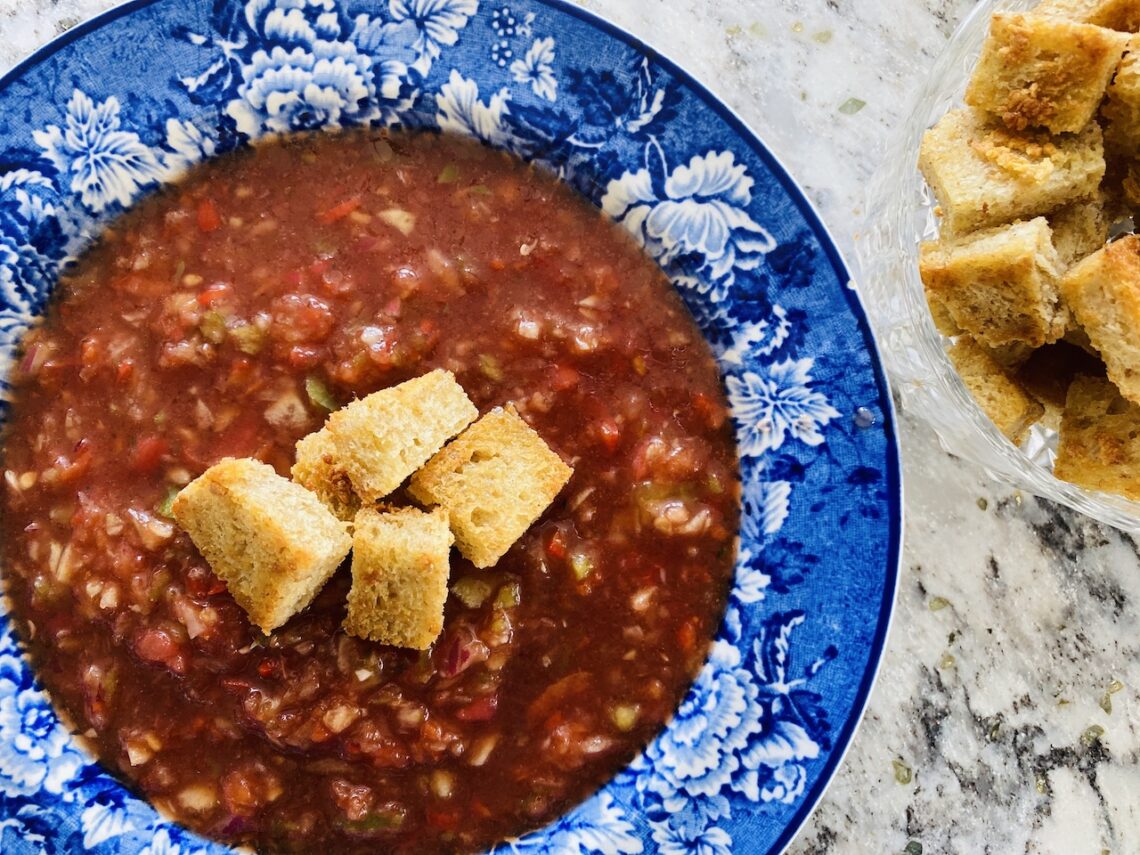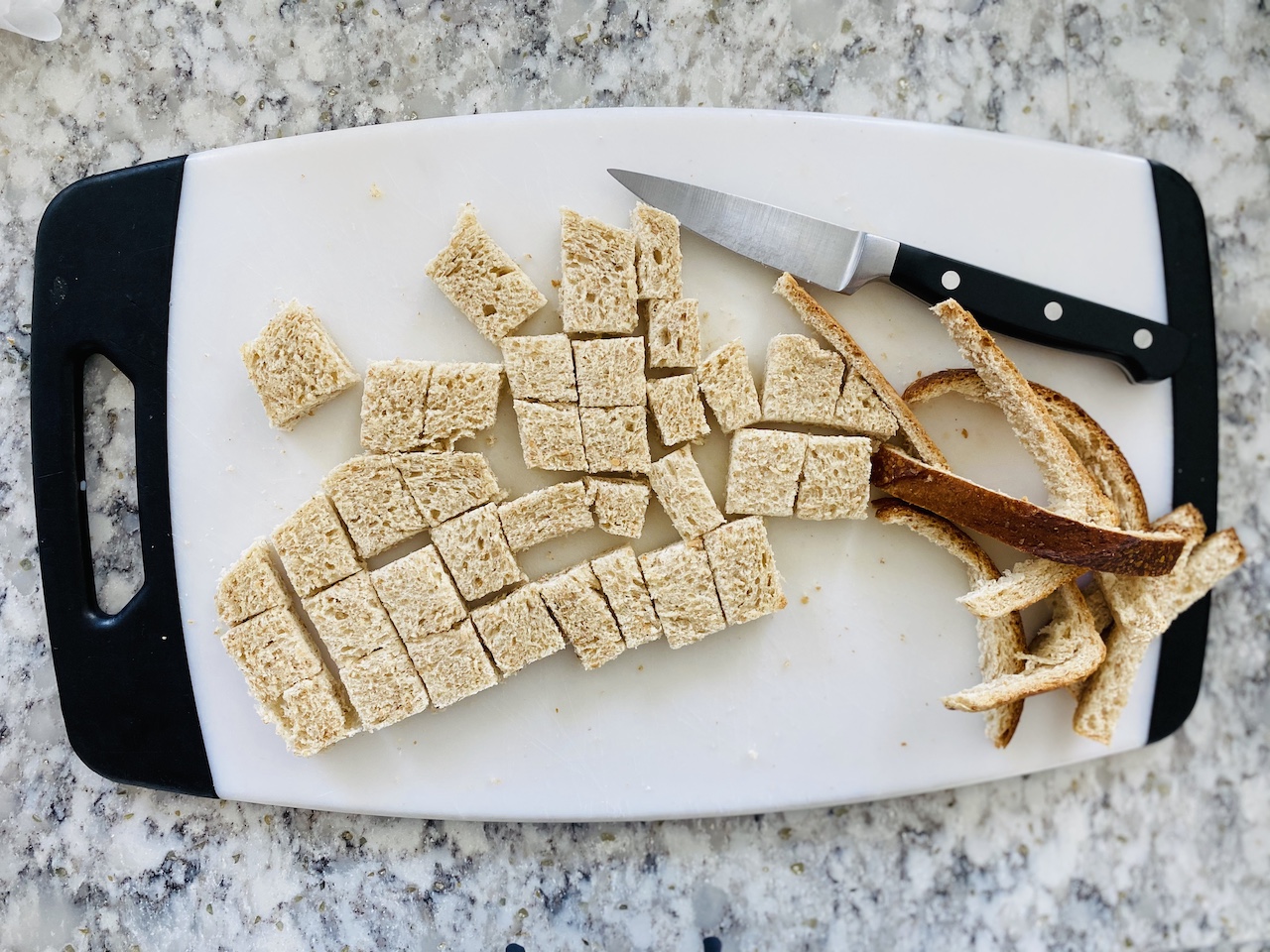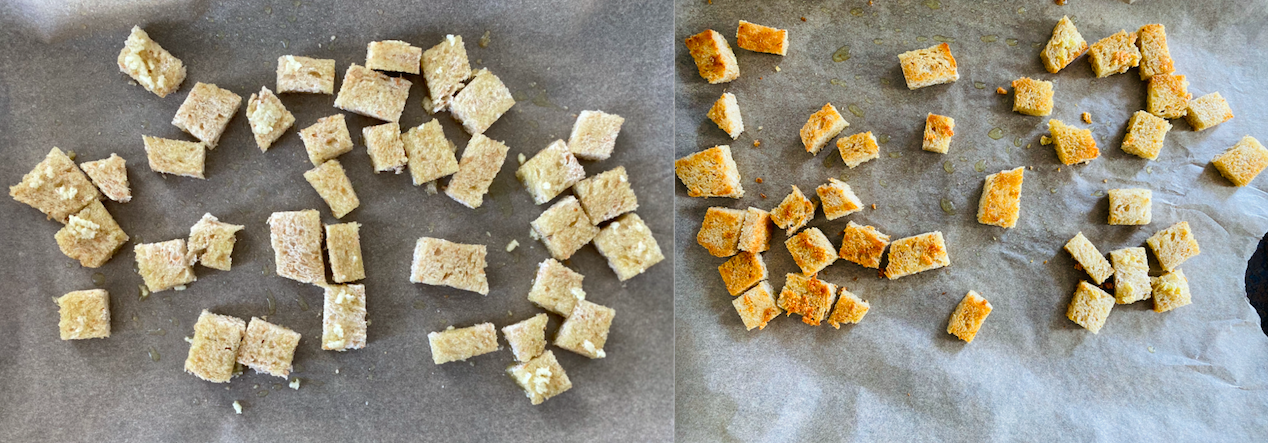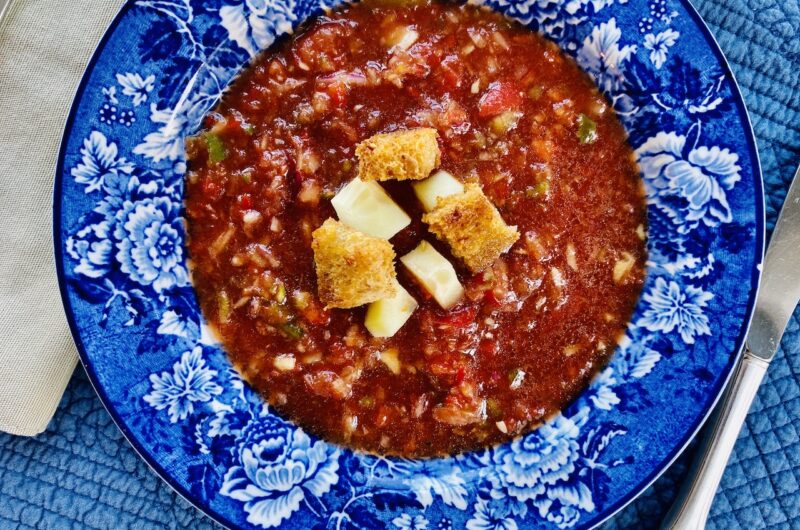
Gazpacho
Gazpacho is one of the true joys of summer, along with picnics in the park and reading on the beach. As July begins and real summer hits Chicago – hot and humid, and miraculously, this year perfectly sunny – it’s time for gazpacho. For years my mother made this recipe and I always loved it. When I finally asked her for it, I realized just how simple it is. You chop up some vegetables and mix them together with liquid, and then wait for the soup to get cold. That’s it. But despite its simplicity, there’s something special about it – especially when you add the crunch of the croutons to it.
I’ll stop raving about the gazpacho and get to the main ingredient: tomatoes. I know that I’ve already written about tomatoes and that there are a lot of ingredients I haven’t yet discussed. But it’s the middle of summer and a great time for socially distanced picnics, so I want everyone to be able to enjoy this recipe. For this post, I focus on tomatoes from Italy, which is a large producer of processed tomatoes. In 2018 Italy exported 1.74 billion Euros worth of processed tomatoes – 53 percent canned tomatoes, 35 percent tomato paste, and the remaining 12 percent of tomato sauce.
Unfortunately, the Italian tomato industry is known for its exploitative labor practices. The conditions have repeatedly been described as “a modern form of slavery.” The tomato fields (and other agricultural industries in Italy) bring together three conditions that make exploitation on a large scale possible: a large migrant population, many of whom don’t have papers or work authorization and are therefore vulnerable; an anti-immigrant government that has little interest in enforcing the rule of law; and a powerful mafia that runs much of the agricultural sector.
A majority of agricultural workers in southern Italy are migrants from Africa, although there are also a number of workers from Eastern Europe. One estimate suggests that there are currently about 400,000 migrant workers in the Italian agricultural sector. There are clear indicators of forced labor in the tomato industry: workers have described having their identity documents withheld and not receiving their pay, and most work for lower wages and longer hours than is legal. But because of their precarious positions in Italy, workers are scared to speak up against these abuses. This fear is exacerbated by the threat of physical violence that hovers over the industry.
Italy has a minimum wage for agricultural work – 7 Euros an hour – but migrant workers rarely receive that. Instead, workers are often paid using a piecework system, even though it is illegal. Workers often receive only 3.50 Euros for each 300 kilogram (about 661 pounds) chest of tomatoes, or 5.50 Euros for the same weight in cherry tomatoes. With such low payments, workers make at most 30 Euros a day – but much of that money is deducted for costs. Workers often pay 3 Euros a day for transportation to and from the fields, on buses that are packed full – often to twice their capacity. (Recently there have been a number of tragic accidents involving these buses.) Workers often are gouged and have to pay 3-4 Euros to buy a sandwich in the fields and another 1.50 Euros for bottled water, 50 cents if they need to charge a cell phone, and 20 Euros if they have to go to the hospital while working – which, given their twelve hours workdays in the sun with 10-minute breaks to eat, happens.
Italian agriculture has created an effective system that exploits migrant labor. Much of the agriculture in southern Italy is run by the mafia, which uses middlemen known as Caparoli – gangmasters –to organize the work force. These middlemen are often migrants who have learned Italian and managed to save up and buy a vehicle. They provide transportation for workers to and from the fields – for a price – and they often take a cut of workers’ pay. Although a law passed in 2016 banned the caporalato system, it continues to be prevalent in the agricultural sector. The Italian government, which is adamantly anti-immigrant, has made its lack of interest in enforcing its own laws and cleaning up the agricultural industry clear.
While the Italian government has a duty to enforce its own laws and clamp down on labor abuses, the companies that buy these tomatoes are at the root of the problem. By pushing suppliers to sell tomatoes to them at lower prices, companies have pushed down the pay for workers along the supply chain, including those who pick the tomatoes. Companies are complicit in this forced labor. They know that it happens and do little to change it. While there are some certifications for Italian tomatoes, these appear to have little meaning. According to the secretary of an Italian agricultural union, inspectors are “very few and very corrupt.”
So what should you do? Well, if you live in Europe it may be difficult to find tomatoes that have a clean supply chain, since many European countries source processed tomatoes from Italy. In the US, it’s a bit easier, since a lot of processed tomatoes come from California. (Of course, the working conditions there aren’t great either.) But while it’s a good idea not to finance forced labor directly, for real change to happen we need companies to pay more to their suppliers and make sure that the extra pay makes its way down to the tomato pickers.
Gazpacho
Course: Appetizer, Dinner, Recipe, Soup8
servings40
minutesAdapted from Gazpacho (Spanish Cold Tomato and Cucumber Soup) in The Essential Vegetarian Cookbook (1998)
Ingredients
- Gazpacho
1 red onion
1 medium cucumber (peeled, with seeds removed)
1 green pepper
1 red pepper
3 plum tomatoes
2 cloves of garlic, minced
3 ½ cups tomato juice
½ teaspoon of sugar
¼ cup olive oil
¼ cup white wine vinegar
Salt and pepper
- Croutons
6 pieces of old bread
¼ cup olive oil
2 garlic cloves, minced
Directions
- Gazpacho
- Finely chop the red onion, tomatoes, cucumber, and peppers. (Alternatively, use a food processor to speed up this process. Some of the vegetables may let out a bit of liquid, which is fine.) Add the vegetables to a large mixing bowl. Then add the garlic and mix.

- Add the tomato juice, sugar, salt, pepper, olive oil, and white wine vinegar to the mixing bowl and mix everything together.
- Refrigerate for at least one hour, or until the soup is cold.
- Croutons
- Preheat the oven to 350˚ F (180˚ C). Take the old bread and cut off the crusts. Cut the bread into ½ inch pieces and place them on a baking sheet lined with parchment paper.

- Add the minced garlic to the olive oil and mix.
- Pour the olive oil and garlic over the pieces of bread. Make sure that each piece is coated in olive oil and garlic. This may involve moving the bread around the parchment paper and flipping it over to make sure both sides are evenly coated.

- Bake the bread pieces for about 7 minutes, then flip each piece over and bake for another 7 minutes. The croutons are done when they are light brown on each side.

Notes
- If you want less red onion in the gazpacho, you could use anywhere from ½ a red onion to a full one.
- I used whole wheat sandwich bread for my croutons because that’s what was in the fridge. But you could certainly use any white bread to make them and could probably use most types of sandwich bread.






2 Comments
Avis Miller
Another wake up call! Thank you Allie!
Bites & Rights
Thanks for reading!